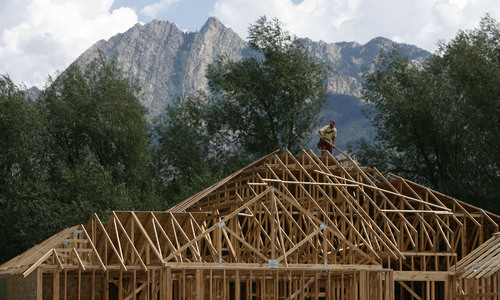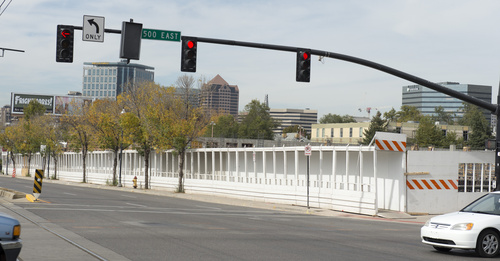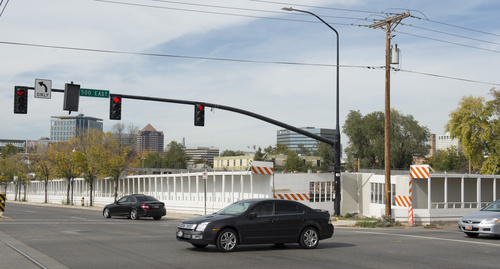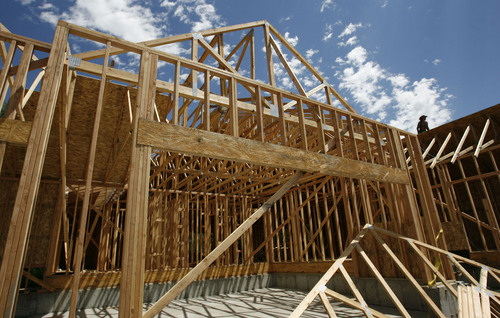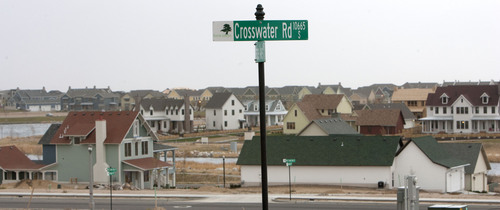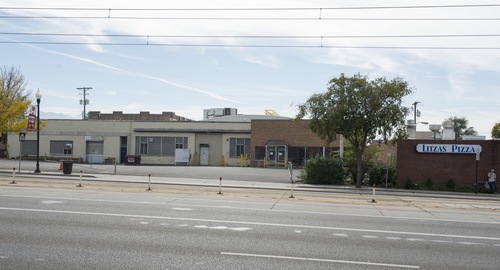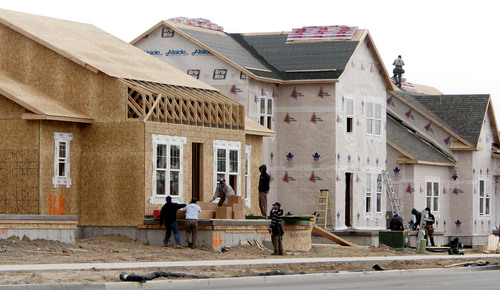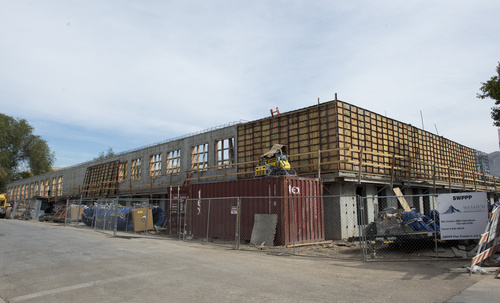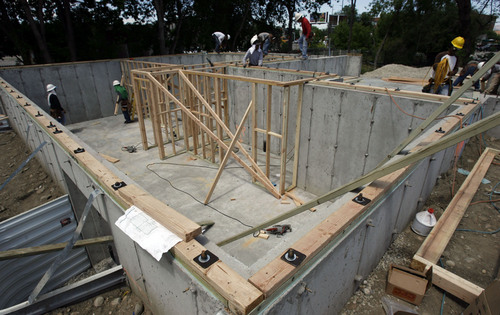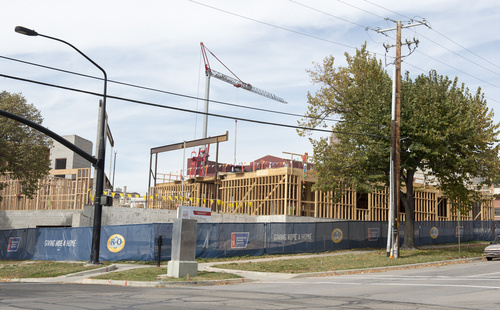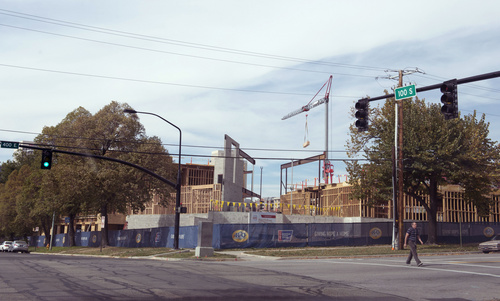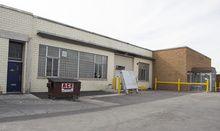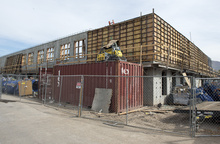This is an archived article that was published on sltrib.com in 2014, and information in the article may be outdated. It is provided only for personal research purposes and may not be reprinted.
Seven years since the Great Recession wiped out $25 billion in Utah homeowner equity, its economic cataclysm still echoes.
A new study from the University of Utah shows no other recession since World War II has been as slow to heal, with astonishingly long-lived effects from a historic foreclosure crisis, major hits to residential real estate prices and continued weak demand for new-home building.
Unlike the four previous real-estate crashes since 1970, this one is way behind schedule for fully bouncing back, according to newly released research by the U.'s David Eccles School of Business. Utah's current job-growth rates surpass national levels and mortgage rates remain low, yet its recovery is at only about half its pre-recession peak.
Past downturns over four decades usually returned to 80 percent four years after the market hit bottom, the study found.
"What distinguishes this cycle from the others is the prolonged period of very sluggish levels of new construction and the timid recovery," said study author and U. economist James Wood, whose research highlights the slowest homebuilding rebound of any recent downturn.
Pain in the housing industry, the noted economist writes in a 25-page analysis released this week, "has diminished but not ended."
One of Salt Lake County's top Realtors agrees the effects of the downturn persist across Utah's housing markets, especially as interest rates tick up. Major economic factors, he said, are affecting not only cash-strapped first-time buyers but also a once-resilient market driving force: existing homeowners using accumulated equity to refinance and move up in the market.
"There's still a big lingering of people who would like to do something but can't because of what the recession did to us,'' said Dave Robison, incoming president of the Salt Lake Board of Realtors, though he noted slight improvements in new home prices for 2014.
Rising prices for Wasatch Front homes indeed have eased woes for some underwater owners, writes Wood, who also heads the U.'s Bureau of Economic and Business Research, but underlying signs remain of permanent structural change to the state's economy.
Notably, house construction and ownership patterns seem to reflect a historic shift away from buying toward renting as incomes lag and long-term demographics dampen household formation.
The Great Recession was unique in its many impacts, the study notes, in what amounts to a chilling and often-surprising reprise of the devastation. None of the earlier bubbles in Utah housing markets saw such a price free fall, the study found, resulting in record foreclosures and short sales along with massive job losses centered on the construction industries.
While Davis and Utah counties saw dramatic damage to housing markets, Salt Lake County was the epicenter of foreclosures as the recession took hold. Damage zeroed in on ZIP codes with modest home values, with at least nine areas seeing prices plunge by more than 30 percent in five years.
The resulting overhang of foreclosed and bank-repossessed homes stunted price growth for years, with gains finally heating up in 2013 — even as underlying sales slipped. Though inventories of distressed homes eased, real home prices along the Wasatch Front have recovered only 87 percent of their original value since then, in inflation-adjusted dollars, the study found.
And while 2014 construction and permitting in Utah are well ahead of other key states, the year has been confusing for the state's homebuilding industry. Thus far, all 10 of Utah's top builders are headed toward year-over-year declines in new housing units.
The largest homebuilder, Ivory Homes, saw activity down nearly 20 percent while the state's second-largest, D.R. Horton, is witnessing a 44 percent decline in 2014, the U. study shows. Building permits statewide for single-family homes dropped 14 percent through July, down in Utah's four most populated counties, led by a 20 percent decrease in Salt Lake County.
Apartment dwelling, on the other hand, is on the rise, driven by a range of factors that adds up to a tectonic departure for family-focused Utah, which traditionally has boasted some of the country's highest homeownership rates.
During the decade ending in 2010, the average yearly growth rate for renter-occupied homes in Utah was 2.65 percent, compared with 2.11 percent for owner-occupied units, the study notes. Apartment vacancy rates in Salt Lake County have fallen to a historic low of three per 100, down from 7.2 per 100 in 2009.
Apartment construction is brisk — in urban and suburban neighborhoods.
Proof continues to mount that housing preferences are changing, particularly among a new generation of U.S. adults known as millennials. Often carrying student debt and earning modest household incomes as they enter the post-recession workforce, many 25- to 35-year-olds, in particular, find mortgages less affordable and are opting for apartments.
"For millennials, housing may not seem like such a good investment," Wood writes. "Some experts have argued this shift is underway."
Twitter: @Tony_Semerad —
Housing cycles*
Cycle 1 (1972 to 1977)
This five-year cycle included a two-year contraction followed by a record-setting surge in residential construction.
Cycle 2 (1977 to 1984)
A near free fall in housing, due to overbuilding combined with the 1981-1982 recession to devastate the homebuilding industry.
Cycle 3 (1984 to 1996)
This cycle is unique in its length, 12 years from peak to peak. The contraction from 1984 to 1989 included the aftermath of the apartment binge that drove a seven-year upswing.
Cycle 4 (1996 to 2005)
This cycle's main characteristic was the absence of any significant economic downturn, stagnant job growth in Utah from 2001 to 2003 and a trough 23 percent below the peak. The rebound set the stage for the historic Great Recession.
Cycle 5 (2005 to present)
Longest downturn to date, triggered by housing crash and financial collapse. Recovery has been hindered by record foreclosures, a lengthy stretch of job losses and four years of pricing declines. The cycle also saw demographic shifts, including extensive doubling up of households as hard times forced thousands of Utahns to move in with family or friends, damaging housing demand for years.
* Measured from market peak to subsequent peak
Source: University of Utah's David Eccles School of Business


